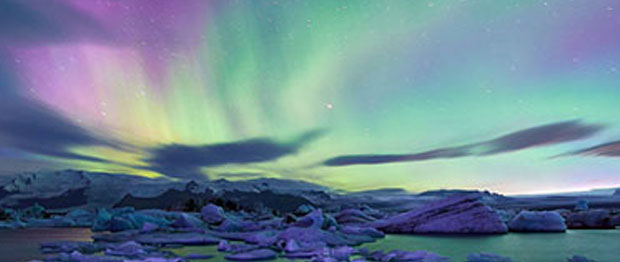5 reasons to visit Iceland

Perhaps a more unusual traveller’s destination, Iceland has been showing up on the lists of people looking for something new and different for their next holiday. This northern Nordic nation appeals to adventure admirers and leisure lovers alike and is anything but traditional. Whether you are in the final stage of planning an Icelandic getaway or simply dreaming of a change, consider Cover-More’s guide to the greatest activities in Iceland.
The mountains
When you are in Iceland, it will be next to impossible to miss or ignore the impressive mountains. The majestic ice caps tower over Iceland and offer spectacular views that you can take in up close with hiking trips with any number of outfitters in the area. Whether you are looking to trek through the wilderness on foot or prefer to see the mountains by car, here are three locations you cannot miss:
Langjokull Glacier
The most popular activity on this flat, snowy land high above Iceland is skidoo riding. Local companies offer relatively cheap day trips with specialist 4x4 drivers. Popular packages for rides on Langjokull Glacier include the Golden Circle and Glacier Ride Tour from Reykjavík by Arctic Adventures and the Express Activity Tour by Extreme Iceland.
Kirkjufell Mountain
This lone mountain near the western town of Grundarfjörður offers clear views of waterfalls and the Northern Lights at night. Large cities like Reykjavík, Borgarnes and Vegamót all offer bus services to this area.
Gullfoss Waterfall
Known as the 'golden' waterfall, Gullfoss Waterfall is one of the most popular tourist attractions in Iceland. Located on the southwest side of the island, this point offers stunning views of the Hvítá River’s distinctive tiered falls.
The volcanoes
The geologist in your group will blow his lid over Iceland’s volcanoes. These often active volcanoes add an element of danger to your holiday—always be sure you are aware of the volcano’s status and clear it with professionals before you begin exploring the volcanoes. Whether you want to spelunk or climb, these three volcanoes are Iceland’s must-see lava locations:
Landmannalaugar
This region is actually a collection of multi-coloured rhyolite mountains, expansive lava fields and a volcano—the Hekla, to be exact. Landmannalaugar is famous for its hiking fields, such as the Laugavegurinn trail.
Skaftafell Ice Cave, Vatnajökull National Park
Beautiful ice caves make this a spot for arctic adventurers and is best visited in the winter. It is too dangerous to enter ice caves alone, though, so make sure to book through a reliable guide company, such as Glacier Guides.
Maelifell Volcano, Myrdalsjökull Glacier Park
Maelifell is a typical volcano. During summertime, a perfect cone shape and a lush green base make it the classic volcano experience and visual. The surrounding national park, which houses several more volcanoes, also includes hot springs.
The whales
As if the natural wonders weren’t enough, when you head to the sea, whales are often visible around the island between May and September. Popular trips depart from the Old Harbour Reykjavík several times a day. Tours often last between two and three hours. Elding is a popular whale tour company in the area, as is Extreme Iceland. There are over 23 different types of whales that can be spotted off Iceland’s coast, including humpback and minke whales. Icelanders, generally, culturally accept the practice of whale hunting and whale meat can also be found in area restaurants.
The Blue Lagoon
Sit in the milky waters of this hot geothermal spa to relax and unwind. Children soak in this pool for free, while adult packages begin around NZ$55. This location is perfect for any weather, as water is naturally heated and surrounded by lava fields of black volcanic boulders. The Blue Lagoon is only 40 minutes removed from Reykjavík, and it offers full spa services in addition to the geothermal soak mentioned above.
The Northern lights
The most popular tourist activity in Iceland involves the viewing of Aurora Borealis, which are also visible in other northern locations around the world (the Northern lights in Greenland are another must-see tourism spectacle). While many companies promise guided tours with great views of these colourful lights, be warned: as the Northern lights are a natural phenomenon, they may not always be visible. Furthermore, the best times to visit vary year to year, though generally, they last from late fall (September to November) to early spring (March to April). Check with specific companies and news organizations before investing too much in a Northern Lights tour.
Iceland is a country for extreme explorers and extreme relaxers. But before you embark on your Icelandic adventure, consider adventure sports travel from Cover-More Travel Insurance.